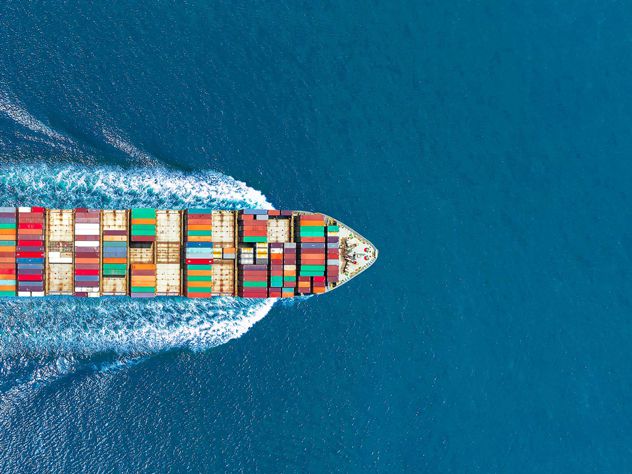As has been reported in numerous trade and mainstream media publications, the U.S. is in the midst of a logistics infrastructure crisis that we’ve never seen before, at least on this scale, when it comes to the ability to move international cargo into and out of the U.S. With this advisory, we’d like to share with you what these challenges are and how the continuing pandemic and continuing record cargo volumes are compounding them.
These challenges include;
- Record cargo volumes
Port authorities on all coasts are reporting record cargo volumes moving through their facilities for consecutive months. Global Port Tracker reported that in October alone the U.S. imported 2.21 million containers, not TEU’s, into major US seaports, an almost 18% increase over October 2019!
- Labor shortages
The pandemic has severely impacted the availability of labor as well as caused procedures to be changed to enhance the well-being of the labor force. In LAX/LGB, terminals are unable to secure enough dock labor to manage vessel operations/discharge etc. in the normal time. Vessels that took 3 days to discharge & load are now taking 5+ days. Warehouse operations are impacted due to the shortage of labor, which impacts their ability to receive/unload/load containers in the normal velocity of pre-COVID days. This situation is expected to become worse in California with new rules recently put in place to combat a surge in COVID cases.
- Vessel delays
With the above, vessels at least at the major ports, are having to wait days before they’re able to berth and begin discharge/loading operations. These delays create havoc for export cargo as the Earliest Receiving Dates (ERD) are constantly being changed, which impacts truckers ability to deliver export loads and then turn around and pick up import containers from the same terminal, using the same chassis. This also impacts terminal appointments for truckers not being used. The delays at US ports then creates a problem overseas as volumes build on export terminals waiting for the delayed vessels to arrive, which effectively results in blank sailings and starts to create congestion issues at overseas ports.
- Port/Terminal/Ramp congestion
The congestion issues are building at all ports. Some are offering Saturday gates in aneffort to alleviate congestion but this only helps if there are chassis available to mount containers, drivers available to move the containers and warehouses/DC’s open to receive. Many facilities are operating at close to maximum velocity and as a result may not even be able to accept empty containers, which in turn only compounds the problem. The congestion also partially causes vessels to be delayed arriving at berth, or even being diverted to other terminals due to lack of capacity.
- Demurrage / detention / rail storage
Marine terminal operators, railroads & ocean carriers aren’t waiving demurrage and storage charges unless it can be proven they were unable to make available containers when truckers were inside their facilities. It should be understood that ocean carriers, terminal operators and railroads are also being impacted by the shortage of drivers, chassis, warehouse labor or space that results in containers sitting beyond the last free day and negatively impacting the velocity of their operations. These are the risks exporters/importers take when moving cargo internationally and these risks ultimately have cost implications that need to be addressed by the exporters and importers.
- Chassis’
The availability of chassis in relation to container volumes is at an all-time low. This is caused by loaded containers on chassis not being unloaded as quickly, not only as a result of labor shortages but also extremely tight inventory levels in DC’s and warehouses around the nation. Chassis providers can order more chassis from the manufacturers, who are located in China but there’s approx. a 6-9 month lead time, so no quick fix.
- Container trucking capacity
Driver availability is extremely tight throughout the nation but especially at the ports. Standard availability in LAX/LGB is currently 3-4 weeks out, while at other West Coast (WC) ports it’s at least a week. Similarly for East Coast (EC) ports, there’s at least a week before driver capacity is available and it’s only going to get worse as volumes shift from WC to EC ports. Driver availability at Mid-West rail ramp locations is slightly better but considering Railroad‘s only allow 2 days free time, it’s a lot more critical.
- Railcar shortages & congestion at interior ramp locations
There are reports of a shortage of railcars at the major ports/terminals, which is causing extended dwell times for cargo. In addition, some ramps are experiencing a backlog of railcars to unload.
- Canadian West Coast ports
The situation at the ports/terminals in Vancouver & Prince Rupert, BC are similar to those in LAX/LGB. Both ports are significantly smaller in size and realistically not a viable solution for diverting cargo away from LAX/LGB at this time.
- Routing Asia import cargo via USEC ports.
While this could be a limited option, as explained above EC ports are also experiencing infrastructure challenges with vessel discharging delays, driver availability, labor shortages that also impact cargo volumes and services to/from non-Asian trades more so than on the USWC.
The magnitude of the situation that everyone involved in logistics and International Supply Chains are currently facing, is not something that can be resolved in the short term. Essentially, landside infrastructure has not been able to keep up with increased vessel size and volumes they bring. Insufficient warehouse / DC space causes importers to delay unloading of containers, resulting in higher dwell times for containers and chassis, which further impacts the movement of cargo already in the supply chain. Everyone with an interest in the International Supply Chain has a role to play in helping to improve cargo flow, it’s not solely the responsibility of any one party.
With all the challenges indicated above, our operations and customer service teams continue to work diligently to ensure your cargo moves as timely as possible, especially considering the ongoing challenges. In the meantime, should you have any questions, or concerns, please don’t hesitate to contact you Kuehne+Nagel sales or customer service representatives.









